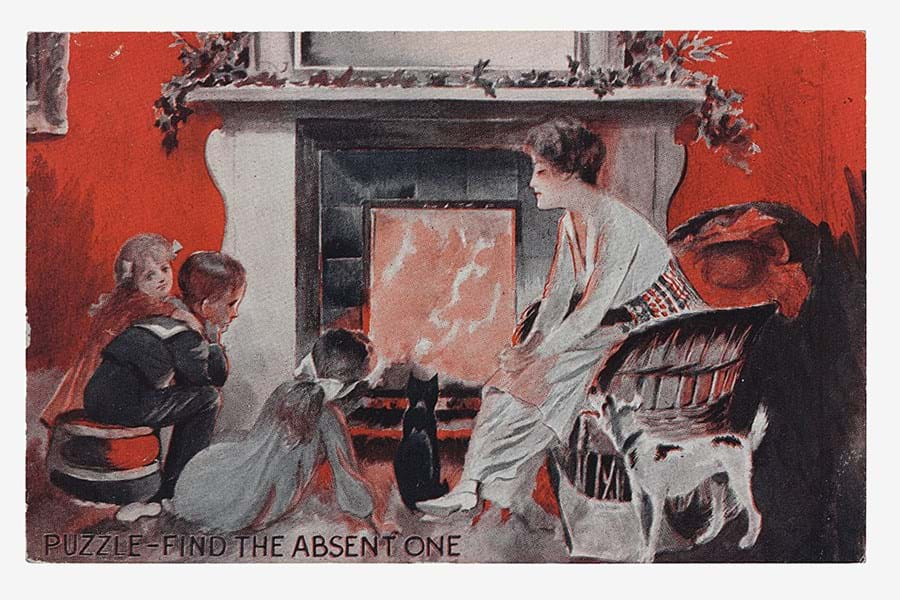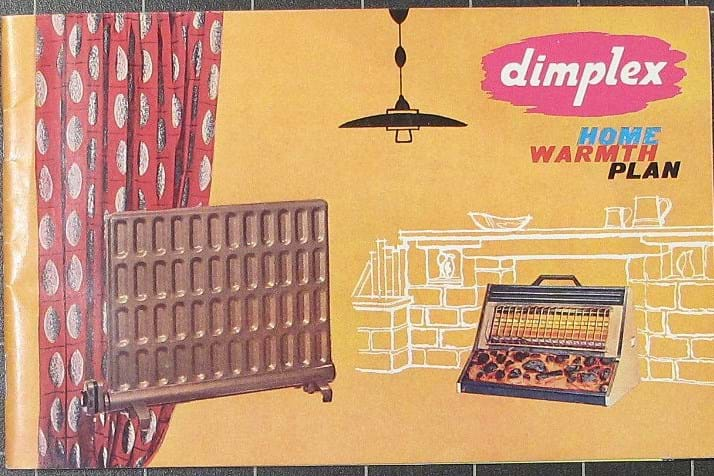How central heating changed our lives
Until the 1970s the British home was a cold place to be. The introduction of central heating transformed our homes and how we spend our time in them.
 Honeywell thermostat, 1980s
Honeywell thermostat, 1980s
18˚C, 19˚C or even 20˚C?
The seemingly eternal question of the correct temperature on the thermostat ignites arguments in households up and down the country, pitting energy-savers and penny-pinchers against those who will defend their right to wear shorts in the dead of winter.
Though the technology has been available since the Victorian era, central heating is a relatively modern phenomenon in Britain.
It only became commonplace in our homes in the 1970s and 1980s.
Before that, having the whole house heated to a balmy temperature was an unobtainable and even undesirable luxury.
 Postcard showing a family around the fireplace 1914–1918 with text 'Puzzle – Find the absent one'. When the card is held to the light an image of a soldier in battle appears in the fireplace. Object number 123/2013
Postcard showing a family around the fireplace 1914–1918 with text 'Puzzle – Find the absent one'. When the card is held to the light an image of a soldier in battle appears in the fireplace. Object number 123/2013
How we used to heat our homes
The primary method of domestic heating throughout history has of course been the fire.
Up until around the 1600s the hearth would ordinarily have been situated in the middle of the main living space, with smoke escaping through a hole in the roof.
In the following centuries houses were increasingly designed with a fireplace built into the wall, which was not only safer and cleaner, but more efficient as much of the heat would be reflected back into the room.
The fireplace rapidly became synonymous with home: becoming the focus of family life and the ultimate symbol of comfort.
 Catalogue from 1962 promoting electric heaters, published by Dimplex Ltd. Object number 152/1998
Catalogue from 1962 promoting electric heaters, published by Dimplex Ltd. Object number 152/1998
Gas and electric
The introduction of gas and electric heating systems in the 1800s and 1900s made heating the home much more convenient, and portable heaters could be moved from room to room.
However, it also led to fears that the move away from the fireplace could prompt the breakdown of the family, with George Orwell impassioned to write the article 'The Case for the Open Fire' in 1945.
While this moral panic may seem excessive now, central heating in homes has seen the decline of the living room as the main social space in the home, and the rise of the bedroom as a place for hanging out and entertaining.
 Kate L's bedroom with radiator in Anerley, taken in 2011. © Em Fitzgerald. Object number 512/2011-79
Kate L's bedroom with radiator in Anerley, taken in 2011. © Em Fitzgerald. Object number 512/2011-79
Sustainable living
As we have become used to year-round warmth our homes are now hotter than in any point in history, and while this may allow us to wear next-to-nothing while a blizzard rages outside, it comes with a considerable environmental cost.
With an increased focus on sustainable living, and better insulation and heating methods being developed, it may be that the age of the gas boiler and the radiator is soon coming to a close.
Domestic gamechangers
The objects that shaped domestic life
How TV transformed our lives
Changing the nation's routines
